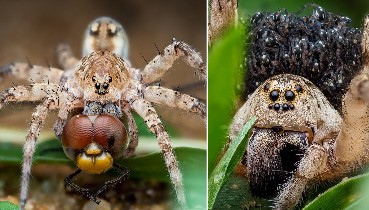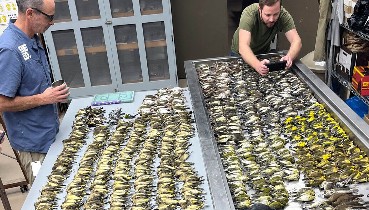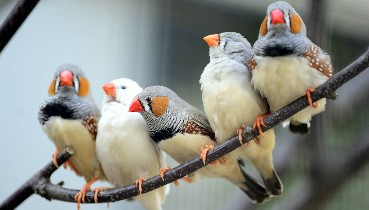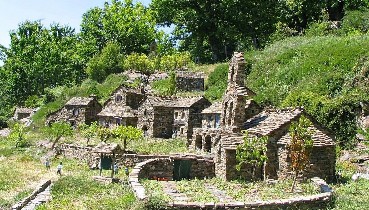
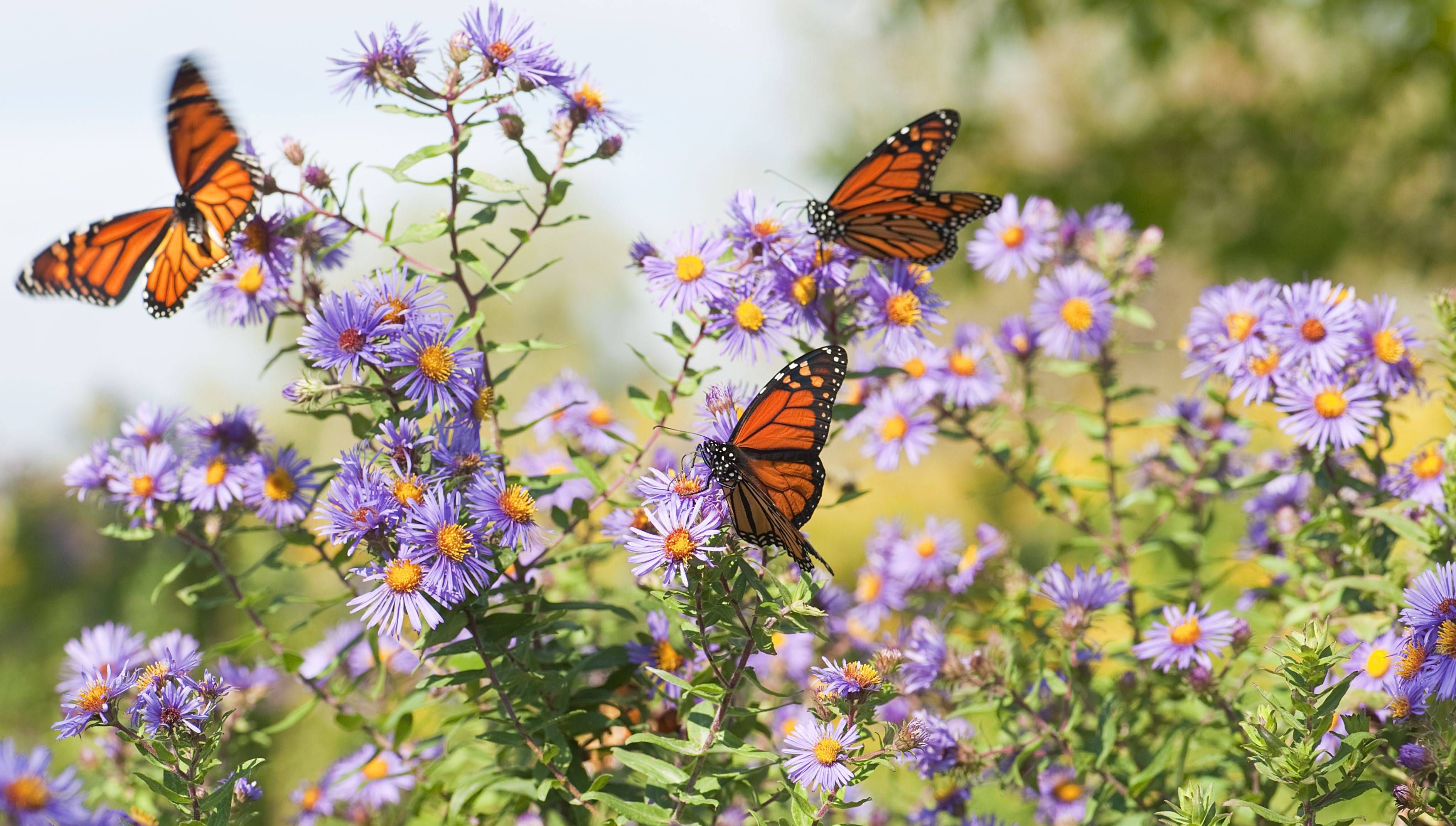
30 Unique Plants That Attract Butterflies
Butterfly Milkweed (Asclepias tuberosa)
Milkweed is often one of the first butterfly plants gardeners mention because it is very important for monarch butterfly survival. Adult monarchs feed on the nectar of many flowers, but they breed only where milkweeds are found.2
Native to the United States, these herbaceous perennials have yellow to orange blooms in the summertime and do well in poor, dry soils. Seeds take a couple of years to be well-established, and eventually the plant forms clumps between 1 and 3 feet high that don't transplant well.False Indigo (Baptisia australis)
A perennial native to the central and Southeastern United States, Baptisia australis is an upright shrub with purple blooms that emerge in spring, typically found in rich woodland environments. Considered an excellent low-maintenance plant, false indigo can tolerate heat, humidity, and periods of drought. Baptisia are host plants for several species of butterfly, including orange sulphur, clouded sulphur, frosted elfin, eastern tailed blue, hoary edge, and wild indigo duskywing
Black Willow (Salix nigra)
Also known as the swamp willow, black willow trees thrive in moist soils and are native to the Eastern United States and Mexico. The largest willow found in the Americas, this tree grows along the edges of lakes and streams and can reach heights of up to nearly 150 feet in the Mississippi River valley. Black willows attract several butterflies in the Callophrys genus as well as Compton tortoiseshells and northern pearly-eyes.
Scarlet Sage (Salvia splendens)
A tender perennial with vibrant red flowers ideal for butterflies and hummingbirds, Salvia splendens bloom continuously from spring to fall and is native to Brazil. Ideally suited to high humidity and year-round warmth, varieties available in the United States can tolerate cold as an annual.
Flowering Tobacco (Nicotiana alata)
Also known as jasmine or sweet tobacco, flowering tobacco is native to South America and is a sun-loving plant with a pleasantly sweet fragrance. Flowering tobacco starts easily from seed and blooms from late summer through the fall. Removing dead blooms and lightly pruning flowering tobacco will encourage further blooming.
Aromatic Aster (Symphyotrichum oblongifolium)
A hardy, herbaceous perennial native to the Northeastern and central United States, aromatic aster generally tolerates poor soils and drought, and is part of the daisy family, featuring similarly shaped, purple flowers.
Typically occurring on limestone glades, slopes, prairies, and dry open ground, this plant hosts caterpillars from silvery checkerspot butterflies as well as a variety of moths, and also provides nectar for numerous pollinators when it blooms4 in late summer.
Butterfly Bush (Buddleja davidii)
Also known as summer lilac or orange eye, butterfly bush is native to central China and Japan and has been classified as invasive in parts of the United States, so be sure to research regulations in your area before planting it in your garden. That said, the butterfly bush attracts a variety of pollinators. Western tiger swallowtails and black swallowtails, among many other butterfly species, seem drawn to this plant.
Ponderosa Pine (Pinus ponderosa))
Native to the Rocky Mountains, ponderosa pines are known for their ability to quickly establish deep roots, growing up to 60 feet tall with a 25 foot spread (these trees do require a larger yard). Because of their roots, they're often planted for erosion control, though gardeners also enjoy their fresh fragrance and lush needles.
Research published in Restoration Ecology showed that butterfly species richness and abundance increased two-three fold after one year in areas where ponderosa pine forests were restored.
Pasture Thistle (Cirsium discolor)
Painted lady larvae enjoy dining on pasture thistle, native to much of the United States and parts of Canada. Numerous butterflies feed on the plant once it produces flowers — large, showy, purple blooms that produce a generous amount of nectar and pollen.7
This plant grows primarily at the edges of forest openings and prairies.
Dill (Anethum graveolens)
Most people are familiar with dill because its leaves and seeds are commonly used in cooking. Part of the celery family, dill plants have finely divided, thread-like fronds, similar to those of fennel, and produce delicate, yellow flowers as the plant seeds.
Hot summers and bright sunlight aid in this herb's cultivation, and partial shade will greatly reduce the plant's yield. The caterpillars of several species of swallowtail feed on dill.
River Birch (Betula nigra)
Tiger swallowtail and morning birch larvae feed on river birch trees, also known as black birch and water birch. Native to the Eastern United States, it's one of the few heat tolerant varieties of birch tree, which commonly prefer colder Northeastern weather. As the name suggests, river birch is typically found near rivers and swamps, meaning it's ideally suited for planting in wetter areas.
Cabbage (Brassica oleracea)
A biennial plant native to southern and western Europe, Brassica oleracea is a species that includes many commonly consumed edibles including broccoli, cabbage, cauliflower, and kale. Hearty and tolerant of drought and poor soils, the European cabbage butterfly (seen in the Western United States from April to October) will feed on this plant in its larval stage.
American licorice (Glycyrrhiza lepidota)
Gerald Corsi / Getty Images
Part of the bean family and native to most of North America, American licorice, also known as wild licorice, is a food source for the larvae of the silver-spotted skipper and Melissa blue species of butterfly, among others. Producing large groupings of small, white blooms, they're also a nectar source for pollinators when in bloom from June to August.
Common Lilac (Syringa vulgaris)
Common lilacs, also known as French lilacs, are native to the Balkan Peninsula and part of the olive family. These large deciduous shrubs are often found growing on rocky hills and produce dense groupings of purple to white flowers with four lobes. These flowers provide food for a variety of butterflies, bees, hummingbirds, and moths.
White Sagebrush (Artemisia ludoviciana)
Native to North America and part of the daisy family, white sagebrush has several other common names including silver wormwood, western mugwort, Louisiana wormwood, and grey sagewort. This perennial grows to be about a foot tall and has leaves covered in wooly grey or white hairs, and also attracts a variety of butterflies and moths.
Common Sunflower (Helianthus annuus)
A stout annual, sunflowers can grow to be up to 8 feet tall, and have coarse hairy stems that produce flowers between July and October with large brown centers and plentiful yellow rays. This plant's seeds provide food for a number of species of native wild birds, and it hosts almost a dozen butterflies and moths in California alone.
Alfalfa (Medicago sativa)
A perennial flowering plant in the legume family, Alfalfa is related to clover and is a nectar source for a variety of butterfly species, including orange and clouded sulphur as well as checkered white.5
Cultivated as food for livestock by the Ancient Greeks, this plant is native to south central Asia but found in many parts of the world today. Typically living 4-8 years, alfalfa has a well-developed root system and is particularly drought tolerant.
Arrowwood Viburnum (Viburnum dentatum)
Also known as American viburnum, these shrubs are native to the Eastern United States and have berries often eaten by songbirds. Producing showy white flowers in the late spring, arrowwood viburnum has a moderate growth rate and should be planted in the spring or early fall.
Flossflower (Ageratum houstonianum)
Flossflower is also commonly called bluemink, blueweed, pussy foot, or Mexican paintbrush, and is native to Central America, where it grows in pastures and moist forest clearings. Its soft flowers appear in a variety of blues, pinks, and purples, and look almost like powder puffs, or strands of floss, hence its name.
Eastern Cottonwood (Populus deltoides)
Cottonwood trees are native to North America and can grow to be almost 200 feet tall, as one of the region's largest hardwood trees. Known for their ability to grow quickly, eastern cottonwoods can see height growth of 10-15 feet per year during their first few years, and produce flowers with small seeds attached to cotton-like strands. Larvae of Weidemeyer’s admiral, western tiger swallowtail, and mourning cloak butterflies feed on this tree.
Goldenrod (Solidago goldenmosa)
Goldenrod, once the state flower of Alabama, is a perennial flowering plant in the aster family native to the United States. An attractive source of nectar for bees, butterflies, wasps, and other pollinators, goldenrod is considered a weed by some, but its attractive flowers and role as a food source for pollinators make it popular in wildflower gardens.
Black-Eyed Susan (Rudbeckia hirta)
Part of the sunflower family, black-eyed Susans are originally native to the eastern part of the U.S., and are currently present throughout all 48 contiguous states. An upright annual with a daisy-like flower head, this plant works well in garden borders or in a cultivated patch of wildflowers, with its nectar attracting a variety of pollinators.
Hollyhock (Alcea rosea)
An ornamental flowering plant native to China, hollyhock is a food source for checkered skipper and painted lady butterfly larvae.5 This plant can grow to be 5-8 feet tall, and does not typically require staking, with large blooms in a variety of colors that appear between July and September, depending on the region where it is planted.
Purple Coneflower (Echinacea purpurea)
Native to North America, this herbaceous perennial typically reaches 2-3 feet tall at adulthood and blooms through the summer and into the fall, providing nectar for a variety of bees and other pollinators. Ideal for curbs and walkways, these plants are commonly cultivated ornamentals that can tolerate drought and different soil types.
Verbena (Verbena bonariensis)
Purpletop verbena is a rapidly growing perennial native to tropical South America that produces fragrant rose-purple flowers, often blooming within the first year of being planted from seed.
Because of its rapid growth, the plant is considered a noxious weed in some areas and has been declared invasive in Washington state, so consult local agricultural extension agents before planting.
Shasta Daisy (Chrysanthemum maximum)
America horticulturalist Luther Burbank created the Shasta daisy in the late 19th century, combining a number of different species of daisies and naming it after Mount Shasta, because the plant's white petals resemble the mountain's pristine snow. These daisies grow well in containers, as they are aggressive growers and may need to be routinely thinned in a garden bed
Zinnia (Zinnia elegans)
Zinnias have large, brilliantly colored flowers in a wide range of shades that provide nectar for several species of butterfly including western tiger swallowtails, silver-spotted skippers, and painted ladies. These annuals will grow and bloom quickly and thrive when seeds are sewn directly into the garden bed.
Firewheel (Gaillardia pulchella)
Native to northern Mexico and the south central United States, firewheel is a hardy plant that does best in hot, dry climates and thrives in desert environments. This flower provides nectar to a variety of butterfly species, and the leaves are a food source for bordered patch butterflies and painted schinia moths.
Bright Lights (Cosmos sulphureus)
Painted lady and monarch butterflies enjoy the nectar of cosmos flowers, vibrant orange yellow blooms present summer through fall.5 Cosmos are native to Mexico and the Southeastern United States, and can grow up to six feet high with a three foot spread, working well in garden arrangements bordering other, shorter plants.
Bee Balm (Monarda clinopodia)
Mark Turner / Getty Images
There are almost two dozen species of the flowering herb bee balm, belonging to the family Monarda. Flowers can be found in a variety of colors, including red, pink, and purple.
One popular variety that attracts butterflies, bees, and hummingbirds, white bergamot, features white flowers (as the name suggests) and is native to the Eastern United States. It's wise to look for native plants when building a butterfly garden, because butterflies in the area have adapted to look for those species.
Recommended Videos
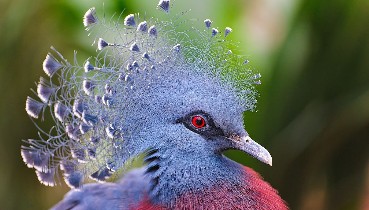 The Victoria Crowned Pigeon is nature’s most opulent bird27 views
The Victoria Crowned Pigeon is nature’s most opulent bird27 views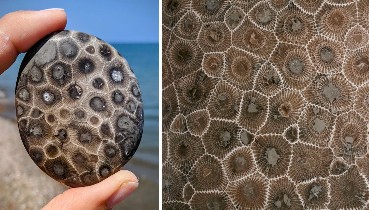 Petoskey Stones Are Amazing Coral Fossils and Here’s How to Find One243 views
Petoskey Stones Are Amazing Coral Fossils and Here’s How to Find One243 views-
Advertisements
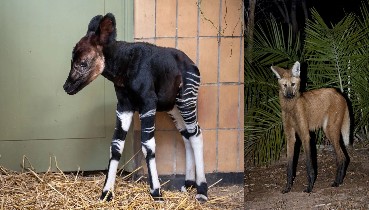 18 of the strangest animals ever4888 views
18 of the strangest animals ever4888 views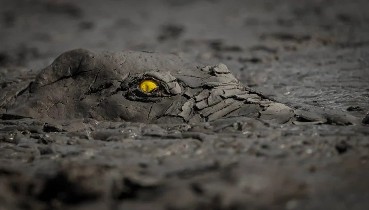 Camouflaged Crocodile Portrait Wins World Nature Photography Awards1054 views
Camouflaged Crocodile Portrait Wins World Nature Photography Awards1054 views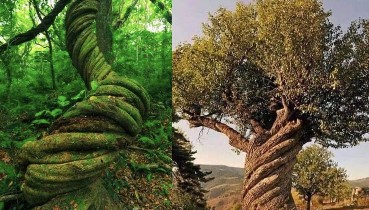 Τһе Μᴏѕt Uոіԛսеlу ΤԜіѕtеԁ Аոϲіеոt Τrееѕ іո tһе Ԝᴏrlԁ149 views
Τһе Μᴏѕt Uոіԛսеlу ΤԜіѕtеԁ Аոϲіеոt Τrееѕ іո tһе Ԝᴏrlԁ149 views The Underground City Of Naours In Northern France92 views
The Underground City Of Naours In Northern France92 views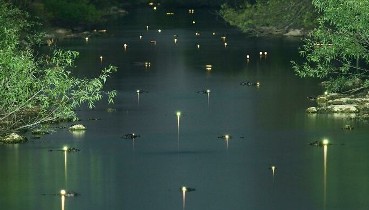 134 Times People Spotted Something Magnificent In Nature And Had To Share It Online85 views
134 Times People Spotted Something Magnificent In Nature And Had To Share It Online85 views La Palma Glass Frog68 views
La Palma Glass Frog68 views
:max_bytes(150000):strip_icc():format(webp)/close-up-image-of-a-beautiful-malachite-butterfly-collecting-pollen-from-orange-and-red-tropical-milkweed-flowers-1250464851-4fd8c7b9f30242c18991ee66f6928855.jpg)
:max_bytes(150000):strip_icc():format(webp)/baptisia-australis-perennial-herb-prefers-rich-soil-that-retains-moisture-and-habitat-in-the-sun-or-partial-shade--under-these-conditions--it-grows-somewhere-to-the-height-of-an-adult--1249141481-15299904068b41c09f42bf001af7daed.jpg)
:max_bytes(150000):strip_icc():format(webp)/willow-and-butterfly-525491144-0bee9193363a4739a4e70db037517758.jpg)
:max_bytes(150000):strip_icc():format(webp)/hummingbird-and-red-salvia--flowers-in-the-garden-1246945639-16e055a1a2524c4b8801f09e68a67720.jpg)
:max_bytes(150000):strip_icc():format(webp)/nicotiana-alata-or-flowering-tobacco-87985833-91a0854fb34d4c45ac85f73757663e6e.jpg)
:max_bytes(150000):strip_icc():format(webp)/floral-background-and-natural-pattern-with-violet-aromatic-aster--symphyotrichum-oblongifolium--flowers-blooming-in-the-park--cluster-of-purple-aster-flowers-autumn-beauty-in-the-garden-1183893929-8f3be2c5c890408e91e622cd52a8eb08.jpg)
:max_bytes(150000):strip_icc():format(webp)/peacock-butterfly--uk-143194636-4ca3827f4d9645fd9717795e26fe40d1.jpg)
:max_bytes(150000):strip_icc():format(webp)/sprauge-lake-and-hallet-peak--rocky-mountain-national-park-155147534-28d36368d4e04df8ad3976bbf10071b9.jpg)
:max_bytes(150000):strip_icc():format(webp)/field-thistle-a1r-8688-1271780409-eba0b5c584854c6d850b5ffbb04a44d8.jpg)
:max_bytes(150000):strip_icc():format(webp)/dill-plant-1054662530-31c945d477ef4d15be3addf8620a1c69.jpg)
:max_bytes(150000):strip_icc():format(webp)/caterpillar-fringe-on-a-birch-leaf--a-group-of-caterpillars-on-a-green-birch-leaf-stand-in-columns--1284071795-fa0abd0927e746d49dee9f1246870212.jpg)
:max_bytes(150000):strip_icc():format(webp)/lot-of-caterpillars-on-cabbage-1297077433-5ebee9e0d2b645a6ba758c0d2c30aecd.jpg)
:max_bytes(150000):strip_icc():format(webp)/GettyImages-1258183592-757c410b9e6f4d3c8ea3fe9decf20267.jpg)
:max_bytes(150000):strip_icc():format(webp)/purple-and-lilac-flowers-1254921755-6f1b560f83a34bbbbec530d72b32f5e4.jpg)
:max_bytes(150000):strip_icc():format(webp)/silver-wormwood-847321706-31821d4dbb8446598a4fe54602461b51.jpg)
:max_bytes(150000):strip_icc():format(webp)/sunflower-1278038372-106b496451924445a8d766b36e66bbad.jpg)
:max_bytes(150000):strip_icc():format(webp)/alfalfa-1164413542-68b620e76c3f4f7487333e3640e59ccd.jpg)
:max_bytes(150000):strip_icc():format(webp)/southern-arrowwood-1254835236-4f5c3a51e00f47fcbc17f3656ea5bb98.jpg)
:max_bytes(150000):strip_icc():format(webp)/purple-ageratum-flowers-in-the-flowerbed--1074756284-f37cc47744774591a708bbeee5cf9495.jpg)
:max_bytes(150000):strip_icc():format(webp)/cotton-wood-tree-flowers-1140817679-e13c941645af400caeb0b840856f8ed1.jpg)
:max_bytes(150000):strip_icc():format(webp)/beautiful-yellow--summer-flowering-of-goldenrod-plant-also-known-as-solidago-goldenmosa-1272949610-3c84eb2bba7c4f90b003bbbcce57448d.jpg)
:max_bytes(150000):strip_icc():format(webp)/blackeyed-susans-133429065-49d20e94b1bd49fa90a36e1576e50609.jpg)
:max_bytes(150000):strip_icc():format(webp)/close-up-of-pink-flowering-holyhock-flower-1202248403-45de564be23f419882712a9df5bbf491.jpg)
:max_bytes(150000):strip_icc():format(webp)/echinacea--with-purple-flowers-1215533902-e993fb953d5a44bf83cfef2382da5688.jpg)
:max_bytes(150000):strip_icc():format(webp)/comma-butterfly-eating-from-brazilian-verbena-155440793-0c8ab0ccb8ac43bd8f19ac821506f6cc.jpg)
:max_bytes(150000):strip_icc():format(webp)/a-wide-angle-view-of-a-medium-sized-cluster-of-white-daisy-blossoms-1251107418-fee0b1dafd544711821591ff24c72d77.jpg)
:max_bytes(150000):strip_icc():format(webp)/zinnia-flowers-in-rock-garden-521095012-c602c4f467674992ad3ded97815b5913.jpg)
:max_bytes(150000):strip_icc():format(webp)/summer-wild-field-with-feral-indian-blanket-flowers-and-butterflies-1184165500-b41bde5a54af49b2857cf899ec978d58.jpg)
:max_bytes(150000):strip_icc():format(webp)/yellow-cosmos-and-a-butterfly-1298880914-afc455917d5e40698d8c29daccb1b347.jpg)
:max_bytes(150000):strip_icc():format(webp)/GettyImages-87986303-acd78977bcbb44099f3215dd18a10602.jpg)
